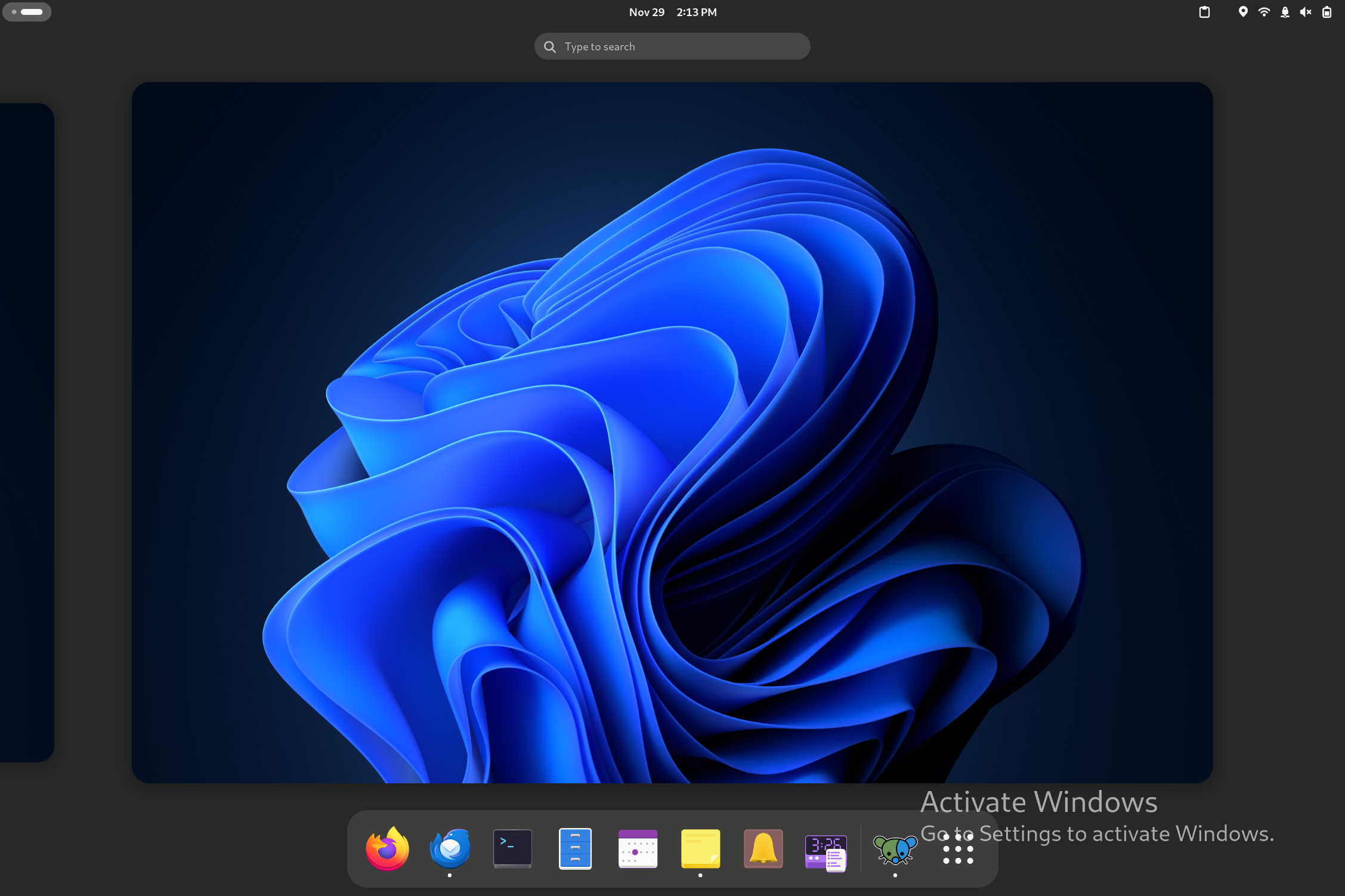Yup. I checked their webpage. Might help battery but I'll try vanilla first. Unfortunately, no dice with the secondary display thing. With RDP, the hardware cursor won't send, and I can find a way to use RDP over type c cable.
Adonnen
Flare isn't feature complete but you can run it in the background for all notifications.
I'd imagine the drm would ruin that plan. No HD streaming.
I think a server is for streaming the audio to different devices. They don't want to stream from phone to the player (or the other way around). They just want to be able to browse library and control playback from their phone.
Looks nice, I'll check it out if I have to use Mac OS again.
I much prefer Windows to MacOS. The fact it is missing decent tiling is a nonstarter. It's too inflexible for my workflow.
And sure, Windows can be maddeningly inconsistent, but what really destroys the experience is the constant ensh*ttification. I know a lot of people here hate everything about Windows, but for me, it only sucks because Microsoft designs it to suck.
Not only are there ads and (some) first party lockin, I cannot trust they will continue offering updates, paywall feaures, restrict more functionality, or insert stuff like AI to mess up my workflow.
I used to think reliability was just about stability and bugginess, but now I think it is about trust as well.
“Exact quotes can be misinformation” I’m glad we agree. In all seriousness, it’s not exactly hard to intentionally or even accidentally mischaracterize a direct quote by taking it out of context.
As for the worst things, I think the Bangladesh genocide is not mentioned enough. Though if you type into google “Henry Kissinger [insert any country here]” you’ll definitely find something horrific.
The “right” of this country hates the ADL as well. They’ve pretty consistently fought the American right and extremism in this country, from the red scare to the civil rights movement to LGBT rights to Trumpism, internet radicalization and the alt-right in the present.
What I would describe as the root of their hypocrisy is cowardice. That’s what I see when they give powerful people like Musk and Kissinger a free pass. It’s a short walk from cooperation and dialogue to outright complicity. To say it’s been ‘captured’ almost absolves it of responsibility; these are clearly choices made by the leadership, not puppeteered by outside influence.
That wasn’t directed towards you. I endorse it as well. What I am reticent about is the disinformation and the role he plays in said dialogue.
Quite frankly, the ADL commemorating him makes my blood boil. To be clear, they do some absolutely vital work combatting and monitoring hatred in the US, and I have been angered by the straight-up conspiracy theories about them. They are undoubtedly a scapegoat of a diverse swath of political movements. But between this (and Greenblatt’s recent defense of Musk), I cannot endorse them.
It seems like it’s easier to pick some prominent (often Jewish) person or organization to scapegoat than to actually confront the depths of American foreign policy, police brutality, etc. There’s no point to policing people’s anger towards Kissinger. He deserves much worse. But I cannot be fully comfortable with where it leads.
I'm glad you do. I want to start contributing and donating too. But I do think the definition of freeloader is a bit adjusted for FOSS software.

For the tablet? I'm considering a Surface keyboard or cheaper alternative, but I would usually be using it for handwritten notes and other tasks for which I would not use the keyboard. It would really be most useful during initial setup. I would still need to easily open it when the keyboard is removed.